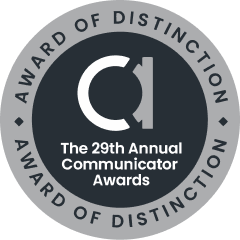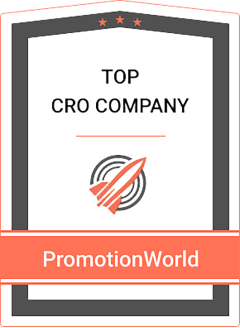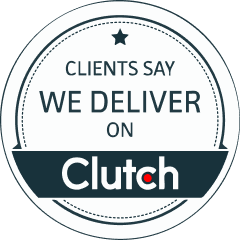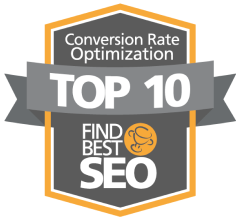Guest: Jaclyn Townsend | Director of Corporate Marketing | TGS
Rebranding can lead to a new phase of business growth but is filled with potential hazards in a way that other marketing initiatives are not. Jaclyn offers insights from her 20 years of experience in public relationship, brand identity, messaging, and digital marketing initiatives in upstream oil and gas. Together, she and Laura explore the pitfalls, challenges, and keys to success in a rebranding strategy.
Laura Cuttill (00:07):
Welcome back, everyone. We’re talking today with Jaclyn Townsend, Director of Corporate Marketing for TGS. TGS is a leader in the upstream oil and gas market for subsurface data and insights. Jaclyn has had 20 years of marketing experience leading public relations, brand identity, messaging and digital marketing initiatives. She’ll be talking to us today a little bit about the keys to success for a rebranding effort.
Laura Cuttill (00:31):
Welcome, Jaclyn.
Jaclyn Townsend (00:59):
Hey Laura, and thank you for having me today.
Laura Cuttill (01:02):
Of course, of course. So rebranding is something we’ve all gone through at one point in time. There’s a lot of pitfalls, a lot of risks, some wasted effort, loss of momentum, but it can pay off if you do it right. So like many companies you’ve experienced and you’ve led rebranding efforts and in some cases with a fairly short turnaround. And so I’m interested to hear a little bit about the kinds of things that you factor into the success of an effort like that.
Jaclyn Townsend (01:30):
It’s a great, great topic. And jumping right in, whether it’s a rebranding or repositioning exercise or whether you’re rolling out a new campaign, it’s really important to understand your goals and what you’re actually trying to accomplish. It’s easy to get into the weeds fairly quickly if you’re not aligned with the business objectives, so start there and use that as your guide. Talk to your executive team and your CEO to make sure you’re clear on what their objectives are, plus, it’s a great way to get feedback. And then from there you can line out the marketing efforts to help the business accomplish its goals.
Remember, it’s about the business and oftentimes marketers or anyone for that matter can get sidetracked with setting and accomplishing their goals or the team’s objectives. So keep an eye on the prize, which is growing and accelerating your business model. Also, use the strengths of your team and the agility of the team to get things done faster and in a timely manner to respond to market conditions. Given the events of 2020, plus the effects this has had on the oil and gas industry in particular, never more has this been true than today. What was true for our team in January, for instance, is not so true today. And by this, I mean that our strategy has shifted and, in some instances, roles within our team have shifted. And you need to be set up to respond to these shifts quickly.
This is also true when repositioning or rebranding. You might not have the luxury of planning six months to a year ahead of your launch, so it’s important to have measures set in place to respond to these critical timelines that you’re given. This includes staying connected and keeping a close eye on what the competition is doing so that you’re positioned to stay ahead of the curve even through whatever changes you may need to make. Also, ensuring you have a close pulse on the business so that you and your team are prepared to respond and there aren’t any overshadowing surprises.
Know your brand. Obviously for marketers that is critical, but really know your brand through these types of changes. Because at the end of the day if you already have a strong brand, it might not be the best option to reinvent. It just because you’re repositioning or rebranding or launching a new campaign, doesn’t mean your brand has to go out the door. And then finally use your network. There are lots of experts and resources to branding, PR, digital marketing, et cetera, that can help you walk through the process. So be open to the fact that you might not know everything.
Laura Cuttill (04:14):
Sure, that makes a lot of sense. So what would you say are some areas that tend to get overlooked in a rebrand?
Jaclyn Townsend (04:21):
I think if I have to list one important area that tends to get overlooked, it would be internal communications. You must educate the people within your company about what you’re doing, why you’re doing it, how you’re doing it, and most importantly, why it’s important to them. What impact will it have on them? Because at the end of the day, our people are our most valued advocates and they are the people who walk alongside your brand every single day and carry the message outside of the company. Make sure the people who engage with your customers through each touch point are fully aware of your marketing efforts and your key messages. In our case, from the geoscience team to the sales team, to really everyone should be aware of what you are doing.
Your ad or your marketing asset can only take you so far, so use your internal advocates as living, breathing advocates that carry out that message. In this day and age, you can do this by launching an internal webinar series to inform your employee base, or if I’m an email marketing campaign, but whatever you do, whatever tactic you choose, make sure there is an open line of communication. Get feedback and answers. Some of our most prized ideas have come from people actually outside of the marketing team. So in my mind, everyone in an organization is a marketer, so really use this to your advantage.
Laura Cuttill (05:46):
Absolutely. Absolutely. To switch gears just a little bit and talk about more of the tactics. I know in your particular case, TGS has both an account-based marketing team and a lead generation team for new clients. Typically, when you do a rebrand it’s geared at winning new customers or entering new markets or something like that, but with account-based marketing the big customers tend to get the lion’s share of the marketing investment. So when you go to do a rebrand, how do you typically allocate time and resources between the two when you’re trying to communicate these two messages or the new message in general?
Jaclyn Townsend (06:21):
Yeah. This is a great question because the two approaches, as you know, can be really different in regards to tactics, as you just mentioned, but share some similarities when you’re talking about communicating your new messaging. Marketing is about supporting sales and the growth of your business, right? But it’s also about sharing your story and building and nurturing relationships. So whether you’re trying to tap into a new market or gain new customers, or keep the ones you have, messaging during a rebrand, reposition, new campaign should consist of a few things.
The first is to explain your story and how it relates to your key audience’s needs. This is crucial when you may not know who you are or what you stand for. So you have to position your company and your messaging so that it’s relatable, so that someone who doesn’t have that existing relationship with you yet wants to know more. Or if you’re marketing to your existing customer base or existing accounts, ensuring those customers understand why they should continue to do business with you and stay a customer even during a shift. This is where the messaging part can split off. So from a tactical standpoint, my suggestion is always to stick with two to three key messages for each base, like the existing customer account versus new leads, and then evolve and test over time.
Next is explain the value you offer. Whether it’s a new client or an existing customer, it’s important not to oversell by explaining everything you offer from soup to nuts. In some instances this is okay, but understanding and communicating how what you offer can help someone accomplish their goals and objectives. Look beyond that sale and further down the funnel so that you’re building those relationships and nurturing those existing accounts with messaging that resonates with them. One of the things that we do is we segment our messaging based on our customer base.
A way to really understand your customer base and what I’ve done in the past and current roles to help develop our messaging is conducting a short survey to understand the buyer journey and personas we should target. This can be as evasive or noninvasive as you want it to be. You can even bring in a third-party to help, but this exercise can give you crucial insight to help your messaging strategy, whether it’s lead-gen or account-based driven.
Laura Cuttill (08:54):
Right, right. So especially, you talk a little bit about messaging and customizing it. When you have very engineering and process centric fields like we work in, there’s this tendency among the engineers to go, “If they just read enough.”
Jaclyn Townsend (09:09):
Right.
Laura Cuttill (09:09):
“If they just read all the features then they’ll buy.” And that’s just not true. People don’t read, they don’t. So I think that’s a really good point there.
Jaclyn Townsend (09:17):
And then people just want to know how it’s going to help them.
Laura Cuttill (09:20):
Exactly, yeah.
Jaclyn Townsend (09:20):
And I think that as, sometimes we’re so entrenched of just getting what we do out that we kind of forget, okay, well, how is this actually going to help the person I’m trying to market to, right?
Laura Cuttill (09:31):
Right.
Jaclyn Townsend (09:31):
Because that in turn is what’s going to lead to long-lasting customer relationships if they know the value you bring and that you’re going to get that value at the beginning, but also through the life cycle of the customer experience.
Laura Cuttill (09:45):
Absolutely, yeah. So we’re all working with reduced team sizes, limited budgets these days, what kind of pointers might you offer to doing more with less?
Jaclyn Townsend (09:56):
There are a few, there’s probably more than this, but the few that come to mind are focus. I cannot stress this enough because it’s really easy to want to do everything and sometimes we try to, but if we don’t have focus things won’t get done and it will be hard to make sense of what you’re doing is successful or not. For instance, if your strength as a team is digital marketing and messaging, stick to that and use tools that can help you build on those strengths. Or if your team’s strengths are production and visualization, to tell your story, stick to that and perhaps develop a repository of infographics to help tell your story, which can then be used through the various channels that you use.
And always remember to ensure what you’re doing lines up with your business objective. So there’s that again, you know that we can sometimes forget. This will always provide the focus you need within your marketing organization. And then, I guess the other thing would be to test, test and test again. Test what works and what doesn’t work and create a culture where your team has the freedom to make suggestions and to be bold. If your team is nimble and small, and you’re trying to do more with less, if something isn’t working don’t be laboring, just move on to the next thing or something is working stick with it. It doesn’t mean just because somebody has something new and shiny that you have to do it. If what you’re doing is working stick with it.
And then make sure you have a system or a reporting structure in place to set up, to help you measure the success of whatever it is you’re doing, whether it’s a rebrand, reposition or campaign. Because at the end of the day, you have to make educated decisions to help your company move forward.
Laura Cuttill (11:45):
That makes a lot of sense. You talked a little bit about examples of things that worked and we talked about rebrands. A lot of times that done in an uncertain market and 2020 really embodied the uncertain market for us. Can you give us some things maybe in recent history, how you dealt with that, that really worked?
Jaclyn Townsend (12:05):
Yeah, lots of shifts happening in 2020, not only because of COVID, but also the effects of the oil and gas industry. So I think for us being able to shift gears quickly and responding to those changes was key for us. Again, we were thrust into this like everybody else, and so we had to act quickly. And I think because our team was nimble and have the experience to just, “Okay, we need to stop this and move onto this,” provided us an opportunity to shift gears quickly. One of the things that we rolled out in record time was a series called TGS On Demand. Because of the reduction and cancellation of in-person events we really had to think about how we were going to get our message out if we weren’t able to rely on one of our heaviest touch points.
And so we rolled out TGS On Demand, which is an on-demand webinar platform. And we were able to roll out something like 50 plus webinars in a couple of months so that our customers had a place to come and learn more about what we do and what we offer them.
Laura Cuttill (13:18):
Wow, that’s a lot, but that’s awesome. That’s awesome that, that worked.
Jaclyn Townsend (13:24):
And one more thing, in an uncertain market I think it gave us an opportunity to take a deeper look at our program structure and to understand what was working and what wasn’t, back to my last point.
Laura Cuttill (13:36):
Right.
Jaclyn Townsend (13:37):
And I think even though the market is uncertain, there’s still opportunities there to help your team position yourself for success after the uncertainty period ends. Because at the end of the day, you want to come out of an uncertain market looking like a shining star. That you’ve actually taken a look at your programs and the structure and what you’re doing to make sure that you’re able to respond to a positive market or wherever the market takes you. So that was another thing that I think the uncertain market period has provided us.
Laura Cuttill (14:12):
Absolutely. I look at a lot of companies in this time and I think those that hunker down and turn their focus internal during perhaps the time that there are things going on, but there’s not a lot of outside events, there’s not a lot of outside initiatives. Part of being successful in that time, I think, is also taking a look internally and really taking that opportunity to make improvements, to do R&D, to really take advantage of that opportunity were you don’t have a 1,000 different things calling your name.
Jaclyn Townsend (14:49):
Exactly.
Laura Cuttill (14:50):
Yeah. Well, thank you so much for participating with us today, Jaclyn, we really appreciate it. And we hope to hear back from you soon.
Jaclyn Townsend (14:57):
Thanks, it was a pleasure.








